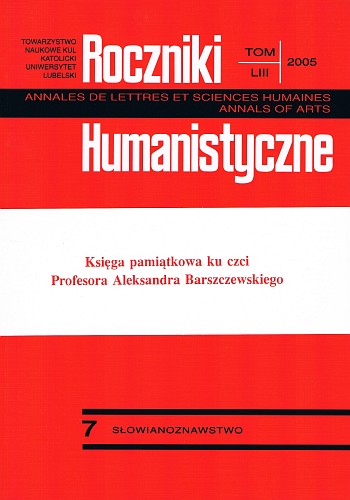
We kindly inform you that, as long as the subject affiliation of our 300.000+ articles is in progress, you might get unsufficient or no results on your third level or second level search. In this case, please broaden your search criteria.

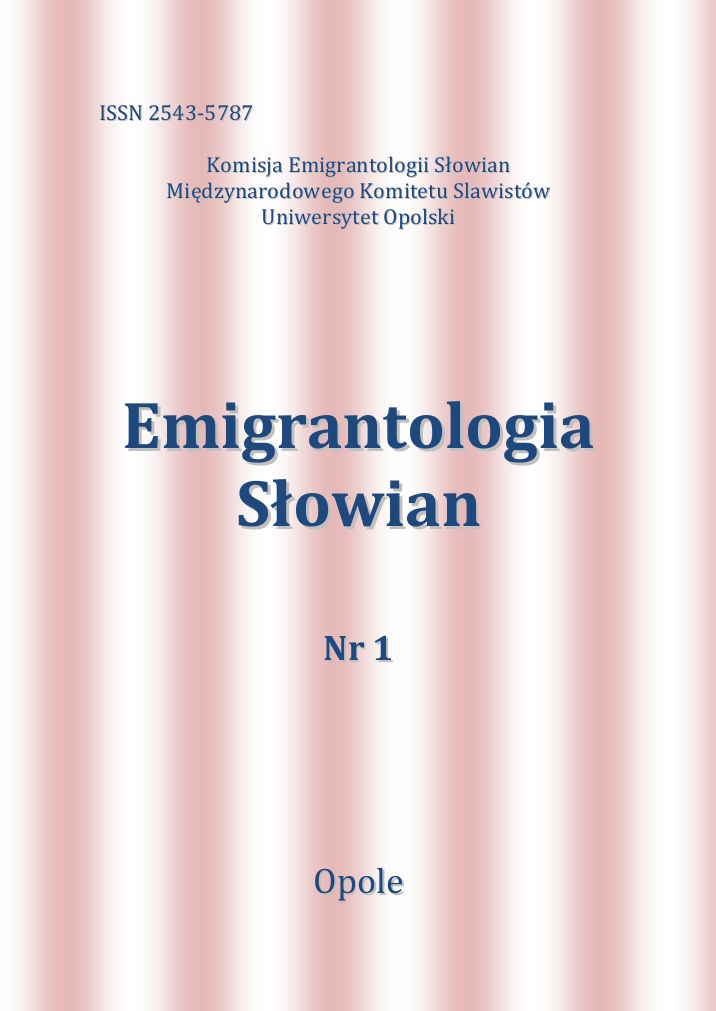

Based on the literary and cultural material, the article discusses two functions played by the term of emigrantology as a legacy of three waves of Russian emigration in the 20th century. The term was introduced by Lucjan Suchanek to the research space of Slavic emigration. It has systematized the area of intellectual and scientific self-reflection (including literary studies, historiography, philosophy and theology, and cultural studies), which developed in the community of Russian emigration. Additionally, the term provides modelling of the need for interdisciplinary and in the nearest future trans-disciplinary studies on the complex cultural phenomenon of Slavic emigrations. In this particular context, the article presents major research directions and achievements of Russian studies in Poland.
More...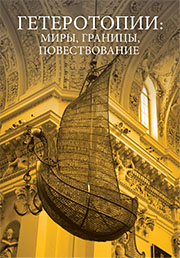
The situation of heterotopia naturally appears in the areas in which multinational cultural and historic context creates premises for ambiguous choice of interpreting the message text, i.e., the areas where the common interpretative convention does not exist. Such premises have been a typical peculiarity of some parts of Central Europe, since the moment of the formation of national civilization structures up to the present time. In frontier areas the relations between centre and periphery are more complicated than the binary centric model “centre – outskirts” which presupposes reproducing the messages of the centre in terms of outskirts. The article deals with the application of the concept ‘heterotopia’ to the field of metric and semantic analyses of rhythmically ambiguous and semantically vague texts. As an example N. Aseev’s poem “Pliaska” (“Folk Dance”) is under consideration. The poem is of interest due to its rhythmical characteristics, as well as to its content and lexical choice, including that of proper names, which indicate the author being influenced by poetical and historic realia of Balto-Slavonic border areas (“kresy” in the Polish language). The poem is analysed in a wide context of Slavonic (Russian, Ukrainian, Belarusian, Bulgarian and Polish) poetry. The paper also touches upon a Slavonic versification universalia, the so-called hexasyllabic verse consisting of two (rarely three) phonetic words. Such type of verse in the context of Russian poetry is usually regarded as exclusively Ukrainian by its origin and as a bright sign of stylization of this kind. The article proposes another interpretation of hexasyllabic verse, namely as a sign of Balto-Slavonic heterotopia.
More...
The author considers the phenomenon of the images of the Belorussian in the works of modern Slavic writers. The following structural components of its paradigm are analyzed: auto-images (images of Belorussians in Belarussian literature) and hetero-image (images of Belarussians in Polish, Czech and Ukrainian literature), their formal characteristics and inner content, modality and interaction, as well as the functional and strategic significance for the formulation of the principles of national Identity and outline of its boundaries at the time of creation (for auto-images). Taking as an example the works of Karpovich, Topol, Urban, Singaevsky, Andrukhovych and some others texts, the author shows that in the non-Belorussian writers’ works, the images of Belarus and the Belorussians have been generally stereotyped (in Ukrainian and Czech literarture) or grotesque (in Czech literature) or even stigmatized (in Polish and Czech litersture). Such images illustrate the cultural and civilization influences and fix certain typological coincidences between the corresponding literary receptions. The imagological image appears to be an extralinguistic phenomenon, a full-fledged subject of interethnic relations, the modality of which forms the scenario of such relationships and determines the role of the author as their social mediator. The article also compares the image of the Belarussian in classical and modern Belarussian literature. There are examples of postmodern ironic rethinking of Kupala autoreflections in the works of Belarussian poets of the 21st century, attempts to deconstruct stereotypical perceptions of Belarussian realities are demonstrated. There is a connection between the updating of the image of Belarus in the writings of modern Belarussian writers and the intensity of the processes of self-identification in the stream of Belarussian culture of the 21st century.
More...
In this article, the artistic features of two camp stories by Lukash Kalyuga “Дзе косцi мелюць” and “Зэнка малы нiколi не быў” are analyzed. The author examines the identification of the national character, culture, life of the Belarusian people. The work presents their psychology in the early twentieth century, their defining mental features, both positive and negative.
More...


In this paper, dance is considered as an element of the artistic structure of dramatic works of Russian, Belarusian and Polish authors of the 1990s–2010s. It was revealed that this element represents the level of the chronotope: it becomes one of its expressive modes (creating an atmosphere due to emotional «charge»), manifests itself as a «non-everyday form of behavior» of a character (J. Faryno), as a «spatial motive» (O. Bagdasaryan) as a sense-forming centre of the artistic universe. A comparative analysis of the plays written by Russian, Belarusian and Polish playwrights of the indicated period showed that in Russian drama the transition occured from the dance – a «spatial motive» to the dance – a semantic center representing author’s model of the world and a Nietzschean man in the terms of a spontaneous, unstable world order. That was caused by the strengthening of the performative and receptive potential of modern drama. At the same time, in the Belarusian drama, due to more strong genetic ties with folklore, the dance for a long time has been manifesting itself as a game form of non-everyday behavior, however, since the mid-1990s it is often introduced as a «spatial motive» representing the extremely deformed consciousness of characters. If it comes to Polish drama, despite the actualization of the dance in the significant for its development works, in the latest plays it rarely functions as a semantic center, because of political and social themes predomination. The authors of this paper made an attempt to clarify the reasons for differents of the dance in the Russian, Belarusian, Polish drama of the 1990s–2010s, based on sociocultural factors, as well as on the logic of the development of the literary proces.
More...
The article discusses life and work of Vyacheslav Bogdanovich (1878–1939/1940?), an outstanding figure of Belarusian national movement, a senator of the Polish-Lithuanian Commonwealth. The son of a Belarusian Orthodox priest, he became one of the most recognized intellectual leaders of his nation, a talented writer, a skilled polemicist and a politician. V. Bogdanovich is the author of many different works. Special attention is paid to his articles devoted to the poetry of Yanka Kupala and Yakub Kolas as well as hagiographic studies related to the mission of the Orthodox patrons of Belarus – Anthony, John and Eustafij. The problem of autocephaly of the Orthodox Church in Poland, which became disastrous for V. Bogdanovich, affected all aspects of his multilateral activities. It also had a direct impact on his description of such topics as “Belarusian spiritual heritage”, “languages of the Orthodox Church”, “the people and the intelligentsia”, “the church and the state”. The last days of V. Bogdanovich’s life were tragic. He was released from Polish detention in September 1939, less than a month later he was arrested in Vilnus by the NKVD and went missing.
More...


The article is dedicated to the memory of Corresponding Member of the National Academy of Sciences of Belarus, Professor, Doctor of Science in Philology Aleh Antonavich Lojka. Most of the life of the famous scientist and writer was associated with the Belarusian State University. A.A. Lojka entered the university in 1948 and until the end of his life considered himself a “university student”. The book “My BSU”, written in 2005–2006, remained unpublished. It includes memoirs “From my recollections of a university student”, “Memories from the socalled social life”, notes “In search of teaching skills” and “Philological poem”. The article for the first time provides information about the history and composition of this book, using archival material.
More...
This article focuses on the silence of a fairy tale hero, i. e. a deliberate withholding from speaking that is a metonymic manifestation of a symbolic death. The aim of the study was to determine the meanings of silence that are representative of this type of narration and to indicate their probable mythical and ritual connotations. Research materials included mainly Polish and Eastern Slavic tales of a sister whose silence constitutes a precondition for bringing her brothers, previously turned into birds, back into human form. The analysis showed the use of a semantic component essential to silence required to keep a secret and impossibility of revealing the truth. If a spell can be a result of a parental curse, then suspending communication becomes a form of maintaining bonds with the brothers killed by words. It can also be interpreted as a reflection of the speech behaviour of the parents, who violate the basic folk ethics of the word. The analysed narratives preserved the magical functions of silence as the assurance of the effectiveness of objects made in complete silence (in the given example — shirts made for the spellbound brothers). Nevertheless, in other variants of plot type 451, the silence of the heroine is the most significant precondition for her own existential transformation, with numerous narratives describing the multi-stage nature of the rite of passage (a marriageable girl → a married woman → a newly delivered mother → a mother). In this indirect way the fairy tale reveals the limits of female communicative behaviour in folk culture. In order to present the essence of the liminality of the given story’s heroine, the “stasis” category was used, which helped to correlate her (and any other fairy tale protagonist) basic existential experience with a temporal dimension of human existence construed as regular consecutive time passages and pauses, moments of inactivity (stasis).
More...
The article focuses on the performance of the Belarusian Free Theatre based on the novel The Dogs of Europe by Аlhierd Bacharevich, which premiered in Minsk on 7.03.2019, and the next stage version was presented during the tour of the collective in London in March 2022. The production, arranged in the conditions of a politically motivated relocation of the troupe in Kiev, is considered in the article in the context of the latest stage practices with high performative-receptive potential, bringing them closer to the techniques of mass media, political protest actions. This determined the methodological basis of the research, which turned to the aesthetic aspects of the theory of communication, the phenomenon of ,,theatricalization” (the focus on visual action presentation) of all spheres of life, as well as to the immanent properties of drama, revealed taking into account the performative turn in modern drama and theatre, which have become adequate artistic statements about the complex relationships within the dyad ,,man – society”. In the course of the study, it was found that the reception of the novel by Аlhierd Bacharevich was carried out on the stage of the Belarusian Free Theatre in line with the ideological and aesthetic attitudes of the collective, which since its foundation in 2005 has been approving the concept of the ,,barricade theatre”, typologically close to a number of theatrical and dramaturgical projects dedicated to the ,,pain points” of modernity: the demarcation of the world continuum according to political and ideological principles, the threat of a global military conflict and their latest local refractions: the suppression of peaceful protests in Belarus in 2020, the invasion of Russian troops on the territory of Ukraine in 2022.
More...
The article presents a comparative historical analysis of fairy tales of the Friends in Life and Death (ATU/SUS 470) plot type, their features and distribution among Belarusians, Russians and Estonians. In the Estonian and Belarusian material, stories of this type are in some cases contaminated with the ATU 470A and 471A types. We examine differences in the flow of time in the real world and other worlds, and consider the features of the chronotope of fairy tales and the organization of artistic space within them, as well as ways of transition and communication between the worlds. According to the most common plot of ATU/SUS 470 fairy tales, two friends promise to be guests at each other’s weddings. One of them dies and the living friend invites the dead one to his wedding; however, after receiving a counter-invitation, he finds himself in another world. There he either travels with the deceased friend through his world, where he sees various curiosities and paradoxes, or celebrates at the wedding of the deceased friend. It seems to the living person that he spent several hours with the deceased friend (or with his brother or father in some Estonian versions), but when he returns to his own world, he discovers that decades or centuries have passed on Earth. Most often, after this discovery, the hero dies and turns to dust, but there are some rare Estonian versions where he miraculously restores ¬himself and his bride to their original state (and age), after which they get married again.
More...
A young rabbinical pupil from a remote Belarusian shtetl, Shmuel Plaŭnik, debuted as a Hebrew poet, and then moved on to Russian poetry, until, with the adoption of the pseudonym Zmitrok Bjadulja around 1910, he came to Belarusian prose and poetry and integration into the Belarusian intelligentsia. His unconventional choice of a Belarusian cultural and literary identity was in contradiction to the traditional ways of acculturation of Jews in the Russian Empire, based on entry into the majority Russian language and culture. Bjadulja not only chose what was at the time a colonial culture with no supporting statehood, but also maintained his dual identity as a Belarusian Jew, which is the basis of his autobiographical narratives, sketches and short stories. In his narrative prose, Bjadulja proposed an innovative synthesis of Slavic and Jewish elements based on his profound knowledge of Jewish sources and Belarusian folklore. This fusion profoundly shaped the imagery, motifs, style and language of his works. Bjadulja was able to bring together two stateless, marginalised and deprecated ethno-national cultures to create a utopian vision of Jewish-Belarusian coexistence and interference that, thanks to the power of his pen, became a fundamental part of the Belarusian canon in his own formation.
More...
The article addresses the problem of the modern preconditions for the formation of the Belarusian nation. Among the open questions investigated by the author are the identification of the period in which the specific collective identity of the population settled on the territory of today's Belarus emerged, as well as the study of historical and cultural factors that may have influenced their national identity. As proposed in the article, the inhabitants of the territories of today's Belarus did not begin to consider the Grand Duchy of Moscow as a separate political entity until at least the 15th century: similarly, it is possible that they did not perceive themselves differently from the Ruthenians of Ukraine before the 17th century. It was only with the Chmel'nyc'kyj uprising and, in particular, during the war between Muscovy and the Polish-Lithuanian Confederation (1654-1657) that the peoples of the Belarusian and Ukrainian regions of Ruthenia began to exhibit significant differences in their interests, values and cultural peculiarities. The long-standing membership of the Grand Duchy of Lithuania and the historical interaction of the Slavs with the Baltic peoples helped shape many specific traits of Belarusian culture and laid the basis for the historical foundations of Belarusian identity as an independent national community. It therefore seems appropriate to associate the creation of the Belarusian nation not only with the Ruthenian identity, but also with the Lithuanian tradition.
More...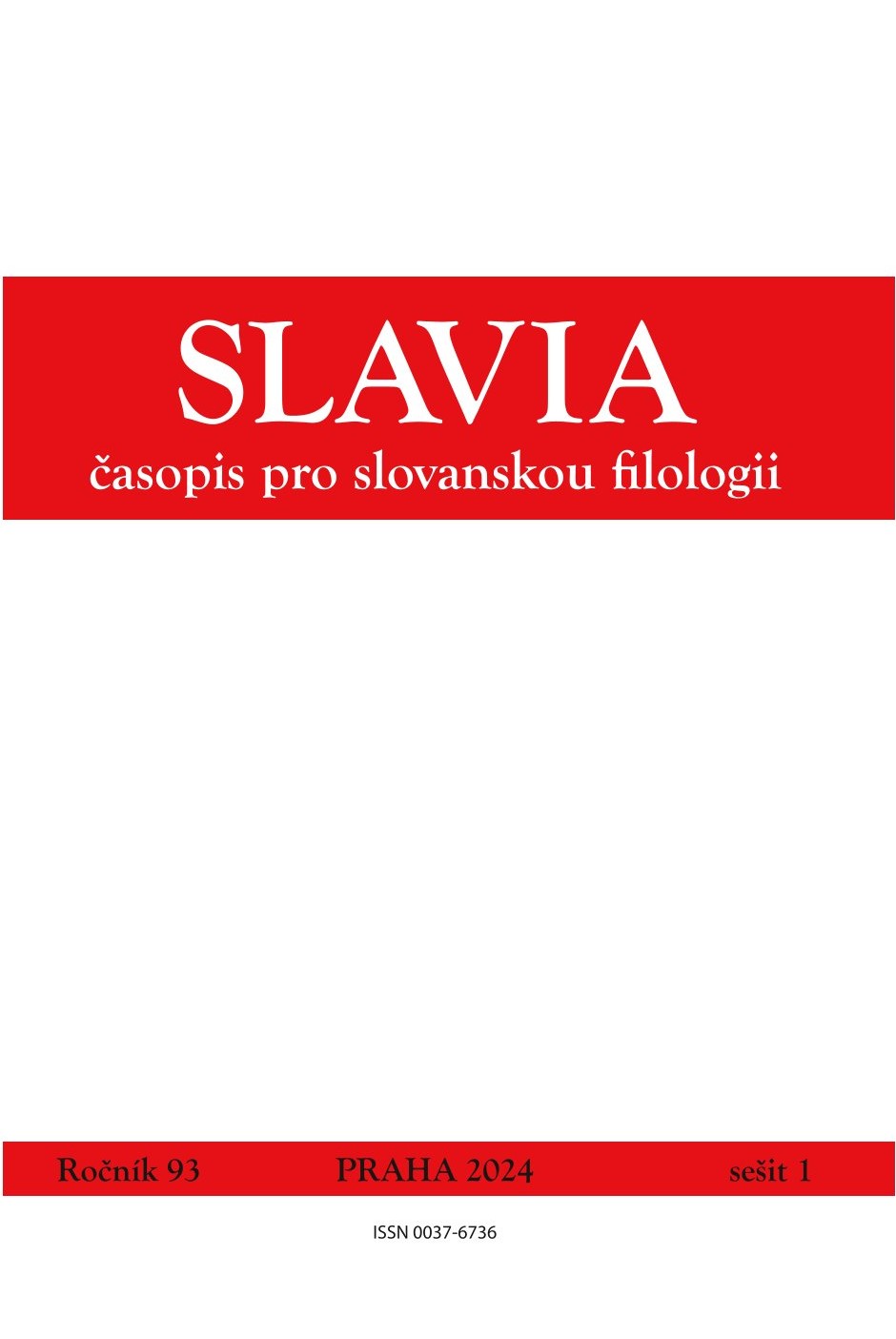
The main purpose of the article is to show the traumatic experiences (the Chernobyl tragedy, the Holocaust) from the animal perspective. To achieve this goal, two prose texts have been compared. Although the texts differ in their narrative strategies, both place an animal protagonist in the center. In the stories Lions by the Belarusian prose writer Ivan Ptasznikau and The Dog written by an Israeli writer of Polish origin, Ida Fink, the animal goes through a painful experience that is close to a human one. These texts fall within the context of the so-called posthumanistics, emphasizing the collectivity of the human and animal lives.
More...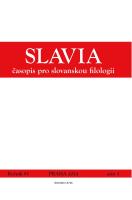
What type of drama, and with what possibilities of expression, emerges in cultures constrained by power? How and what do playwrights who are forced to write anonymously and cannot count on seeing their plays performed in their own country write? Using the example of several dramatic texts by Belarussian contemporary playwrights (first of all we deal with the texts I will emerge from the forest, straighten my backbone, and it shall become my sword by noname67 and Half a Year by Victoria Koval) and theatrical projects that emerged in response to the suppressed protests in Belarus, the study presents the themes, motifs, and modes of narration of the events that will become part of the national history and memory as its traumatic experience.
More...